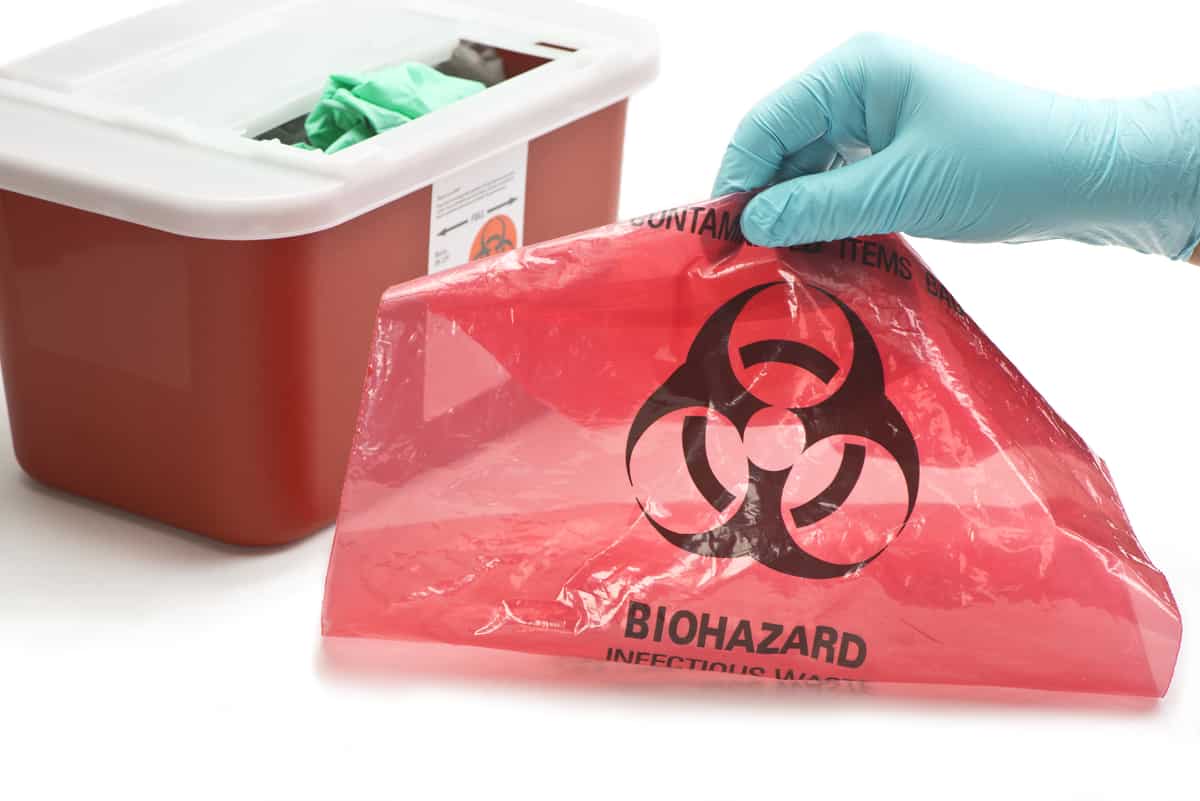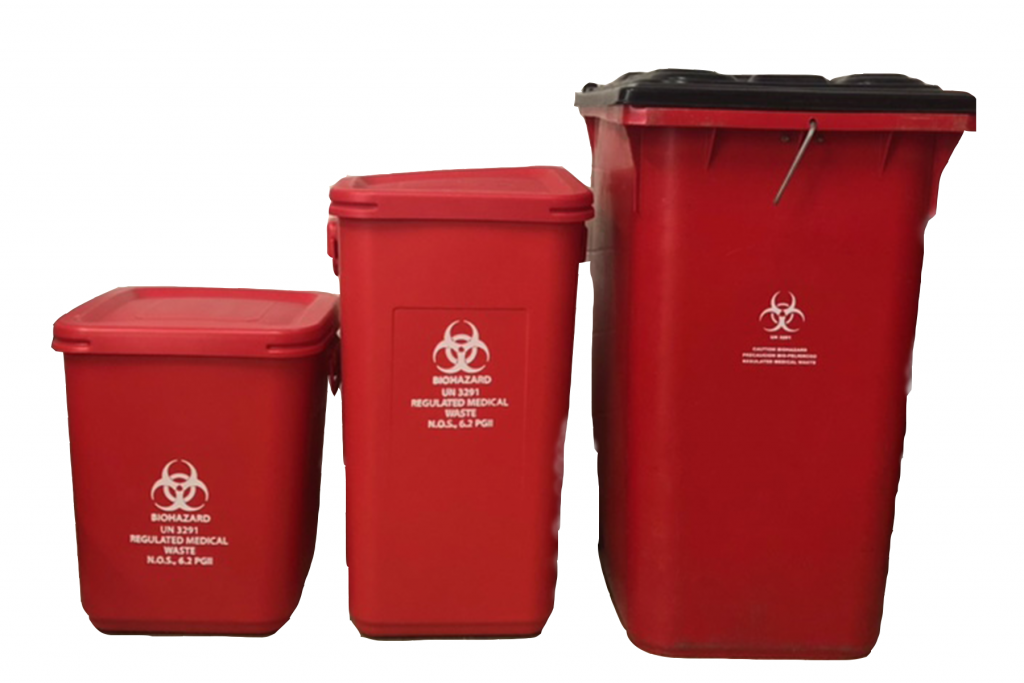Proactive Health Solutions: Choosing the very best Medical Waste Removal Near You
Wiki Article
The Value of Proper Medical Waste Disposal: A Guide for Medical Care Facilities
Correct medical garbage disposal is an essential element of healthcare center administration, ensuring the safety and security and wellness of patients, team, and the environment. From recognizing the various categories of medical waste to abiding with regulative needs, health care centers should take on efficient waste partition practices and select appropriate disposal methods. However, the value of proper medical garbage disposal exceeds simple conformity; it is a responsibility that calls for ongoing training and education for team. In this guide, we will discover the numerous aspects of medical waste disposal and highlight the crucial steps that health care centers need to take. By implementing these methods, health care centers can minimize risks, protect public health and wellness, and add to a cleaner, much safer setting.Comprehending Medical Waste Categories
Understanding clinical waste classifications is vital for appropriate disposal in health care facilities. Clinical waste is a wide term that encompasses different sorts of waste produced in healthcare setups, such as hospitals, facilities, and labs. Categorizing medical waste assists guarantee that it is taken care of, kept, and disposed of securely and according to applicable laws.There are several groups of medical waste that medical care facilities require to be knowledgeable about. These groups include contagious waste, sharps waste, pharmaceutical waste, chemical waste, and radioactive waste (medical waste disposal services with WasteX). Each group has details characteristics and needs different disposal techniques to reduce the danger of damage to health care employees, individuals, and the setting
Transmittable waste, for instance, refers to waste contaminated with possibly transmittable products, such as blood, body liquids, and tissues. Sharps waste includes needles, syringes, and other sharp things that can create injury or send infections. Drug waste consists of expired or unused drugs, while chemical waste includes harmful chemicals utilized in medical procedures. Contaminated waste includes materials polluted with radioactive materials, such as nuclear medication materials.
Compliance With Regulatory Needs
Health care facilities have to make certain compliance with governing demands for proper clinical waste disposal. Regulatory bodies, such as the Environmental Defense Company (EPA) and the Occupational Safety And Security and Wellness Administration (OSHA), have actually established regulations and standards to protect public health and the atmosphere. These regulations lay out the appropriate handling, storage, transportation, and disposal of clinical waste.Compliance with governing requirements is essential for health care centers to avoid lawful fines, reputational damages, and prospective harm to human wellness and the environment. Failure to adhere to these policies can lead to penalties, suits, and also the suspension or cancellation of running licenses.
To ensure conformity, medical care facilities ought to develop comprehensive waste administration programs that consist of team training, proper waste segregation, and the usage of ideal containers and tags. Routine audits and inspections ought to likewise be performed to identify any non-compliance problems and resolve them without delay.
It is vital for medical care facilities to stay up to date with modifications in guidelines and upgrade their waste monitoring practices appropriately. This can be accomplished by proactively monitoring updates from regulative bodies and taking part in training programs and workshops.
Implementing Effective Waste Segregation Practices
To make sure appropriate clinical garbage disposal, healthcare centers must implement effective waste segregation methods. Waste segregation is a crucial action in the overall waste monitoring procedure, as it aids decrease the threat of infection, protects against cross-contamination, and makes certain the secure disposal of various sorts of waste. Effective waste partition techniques include dividing medical waste into various groups based on its qualities and potential hazards.One usual method is the segregation of sharps waste, such as needles and scalpels, from various other sorts of medical waste. Sharps waste need to be positioned in puncture-resistant containers to stop injuries and prospective infections. Additionally, unsafe waste, such as chemicals and drugs, should be divided from basic medical waste to protect against ecological contamination.
Appropriate labeling and color-coding of waste containers are necessary for efficient waste segregation. Clear and noticeable tags must be placed on each container to show the type of waste it has and any kind of special handling needs - medical waste disposal services with WasteX. Additionally, color-coding can be made use of to differentiate between various waste groups, making it easier for medical care staff to recognize and dispose of waste appropriately
Regular training and education for healthcare personnel is vital for the effective implementation of waste segregation practices. Employee ought to be informed on the different waste classifications, appropriate partition strategies, and the significance of complying with waste administration procedures. This will assist make sure conformity and consistency in waste segregation practices throughout the facility.
Choosing Appropriate Disposal Methods
Proper selection of appropriate disposal methods is essential in guaranteeing the environmentally responsible and secure monitoring of clinical waste in health care facilities. Healthcare centers create a selection of clinical waste, including sharps, contagious waste, pharmaceutical waste, and chemical waste - medical waste removal services. Each kind of waste requires details disposal approaches to decrease the threat of contamination, injury, and environmental injuryOne typical disposal method for medical waste is incineration. Incineration involves the controlled burning of waste at heats. This technique works in destroying virus and minimizing the volume of waste. However, it can launch damaging pollutants right into the air otherwise properly regulated.

Chemical sanitation is content another technique used for specific sorts of medical waste, such as pharmaceutical waste. This approach uses chemicals to reduce the effects of or damage pollutants. Nonetheless, it is necessary to select chemicals that are safe and eco-friendly.
Sometimes, garbage dump disposal might be ideal for non-hazardous medical waste (medical waste disposal services with WasteX). Nonetheless, correct segregation and product packaging are crucial to prevent leakage or contamination.
Ultimately, health care centers should thoroughly evaluate the qualities of their medical waste and select proper disposal approaches that prioritize safety and security, environmental management, and regulative conformity. Routine training and tracking are important to make certain that health care team complies with proper disposal methods.

Training and Educating Personnel on Proper Disposal Procedures
Staff education and training play a crucial role in making certain the proper disposal of clinical waste in health care facilities. It is essential that all team member, consisting of doctors, registered nurses, professionals, and assistance team, get extensive training on appropriate disposal treatments. This training must cover the various kinds of medical waste, their potential threats, and the suitable methods for handling, segregating, and taking care of them.One of the primary goals of personnel education and training is to ensure that all healthcare professionals understand the relevance of proper disposal treatments and the prospective effects of incorrect waste management. They need to be knowledgeable about the threats connected with clinical waste, such as the transmission of infections and the contamination of the environment. medical waste removal. By understanding these dangers, personnel members will certainly be a lot more determined to adhere to appropriate disposal methods and take the required preventative measures to safeguard themselves, their colleagues, and the area
Training ought to likewise cover making use of individual safety equipment (PPE) and the correct strategies for managing clinical waste. Employee must be enlightened on just how to recognize and segregate various sorts of waste, such as sharps, transmittable waste, and unsafe chemicals. They need to additionally be educated on the proper use of waste containers, such as sharps containers and biohazard bags, as well as the importance of labeling and securing these containers properly.
Additionally, staff education and training need to consist of routine updates and correspondence course to make sure that healthcare professionals remain notified concerning the most recent guidelines and best techniques in clinical waste disposal. This ongoing education is critical to maintain a high level of recognition and conformity among personnel.
Verdict
To conclude, proper clinical waste disposal is of utmost importance for medical care facilities. Recognizing the different groups of medical waste and medical waste disposal services with WasteX following regulatory needs guarantees the safety and security and wellness of both medical care workers and the basic public. Executing reliable waste segregation methods and picking proper disposal methods are essential in avoiding the spread of transmittable diseases and securing the setting. Training and informing team on proper disposal procedures is necessary for keeping a safe and clean medical care facility.From understanding the different groups of medical waste to conforming with governing requirements, health care centers must embrace reliable waste segregation practices and select ideal disposal methods. These classifications consist of transmittable waste, sharps waste, pharmaceutical waste, chemical waste, and radioactive waste.To guarantee appropriate clinical waste disposal, medical care facilities have to execute effective waste segregation methods. Waste partition is a critical step in the general waste monitoring procedure, as it aids minimize the risk of infection, avoids cross-contamination, and makes sure the risk-free disposal of various kinds of waste. Medical care centers generate a selection of medical waste, including sharps, infectious waste, pharmaceutical waste, and chemical waste.
Report this wiki page